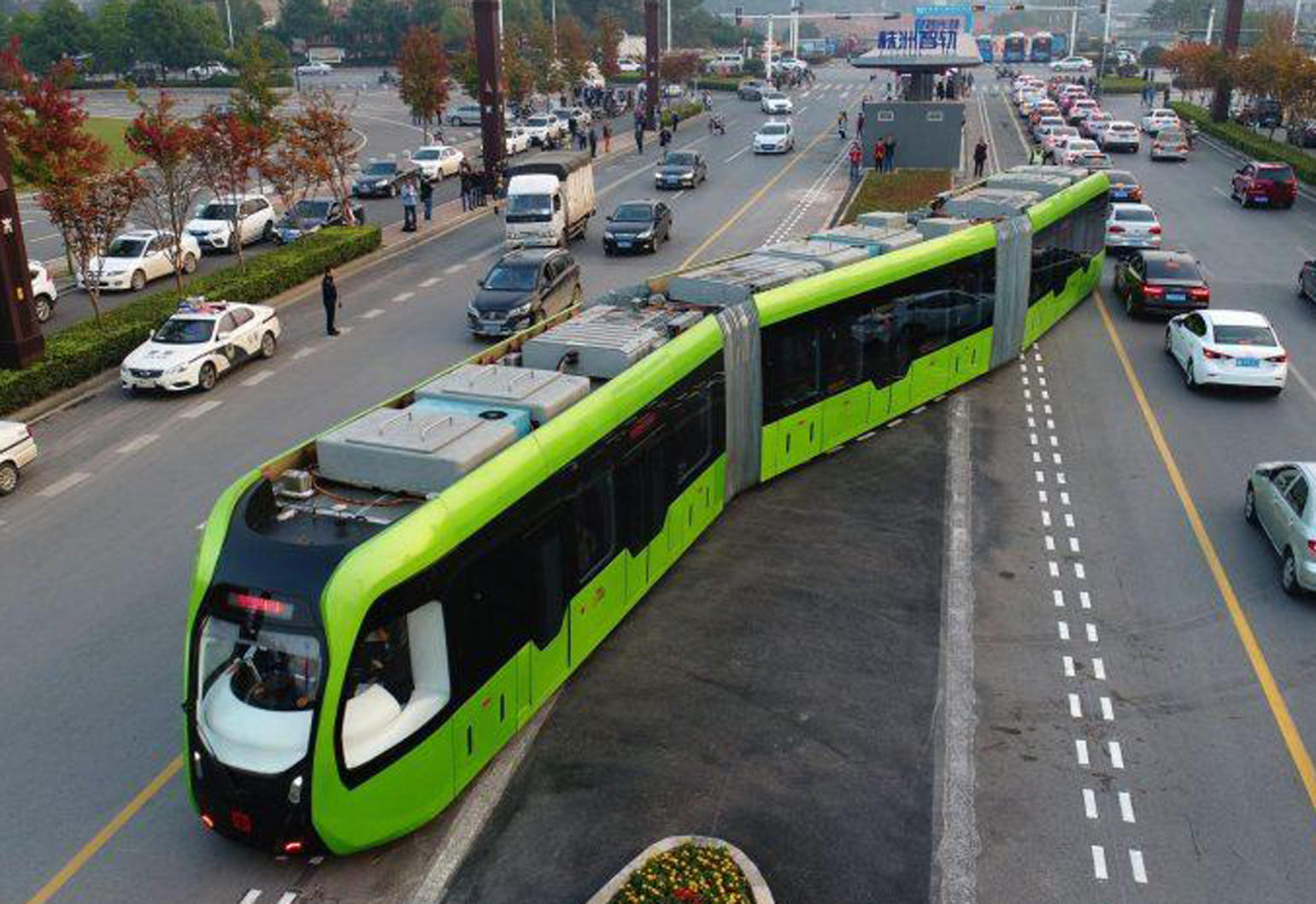- cross-posted to:
- green
- cross-posted to:
- green
Benefits compared to buses:
-
Smoother ride. The tram is computer guided on a virtual “rail”, meaning that the driver doesn’t have to actively make micro adjustments to the steering wheel. Gives a train-like ride, no swaying.
-
Because it doesn’t sway from a centred path nearly as much as a bus, a reserved right of way for it can be much narrower. This saves space and materials.
-
This isn’t really a benefit, but just look at it! It’s cool AF!
-
Electric vehicles, as a rule, last over twice as long than engine vehicles, with the exception of the batteries.
Benefits compared to trams/light rail:
-
Very low construction time for the system if you already have a road. Just close off a lane for this thing and you’re good (probably don’t even need to do that if you’re willing to run it in mixed traffic, but honestly fuck cars, this deserves it’s own lane). Compare this to building rails and stations which can take years.
-
A lot cheaper. The article I linked references a paper says it can be as low as 10% of the upfront costs of light rail. Though it does seem to me like an overly generous estimate, if it’s even in that ball park, it would make it basically on par with regular busses cost wise, not that surprising since this basically is a bus with train-like bogies.
-
Flexible routing. This can go basically anywhere, whereas with a tram you’re stuck on existing rails. You can divert in a pinch if a roadway gets closed, and you can easily revise routes as the city changes.
-
Less materials. This is said to be lighter than a tram or a diesel bus so you already have that, and depending on the exact infrastructure it’s run on, you might even use less materials on the infrastructure compared to rails, or use more but have it last a lot longer (still using less in the long run).
-
More energy efficient than rail trams? See this somewhat heated thread on Reddit.
-
A lot less noise than steel on steel.
The disadvantages I can think of are the tire participates that get into the ecosystem, the sustainability issues with lithium ion batteries, and the fact that this would probably be expensive as hell just because it’s new technology.
All these proposals are attempts to do anything just to not actually do something.
Reminds anyone Elon’s HyPerLoOp bullshit and how it effectively killed the discussion around high speed rail network in California?
I disagree. Unlike many “technological anti-solutions” for transit this proposal maintains the density efficiencies of bus or rail.
By combining advantages from light rail and dedicated bus lanes, this proposal has the potential to be better than both, including in upfront costs(!)
Interesting idea, it is sort of like an AI driven bus that sticks to bus lanes
Hmm interesting. Not sure what to think of it.
At this point, the more options to replace cars, the better. I’d be completely okay if my city closed entire main roads to cars and turned them into lanes for these and regular buses, and then used the freed up space on either side as walking and biking paths, and/or to expand housing complexes.
Oh yeah 100%
TBH at that point it would be easier to get trains, the hard part IMO it’s not to find a replacement but to fight off lobby done by car makers that prevent from alternatives being used. :/
The problem with rubber tires is they wear the ground out a lot more, this increases with weight, these teams are going to be heavy. And if they run along the exact same spot each time it’s going to damage the ground a shit ton. This why why steel wheels on steel rails are better, they can handle a lot more weight with less maintenance.
If you really can’t put in a real tram with rails in, use trolley busses. Trolley busses can be fairly long and high capacity, while having rubber tires for hills. The benefit is they don’t drive over the same spot each time. There’s a ton more benefits to trolley busses and they are greatly underrated.
This sounds like a solution to a problem that doesn’t really exist. Ok well, maybe cities too cheap to pay for rails is a problem.
Edit:
Even worse, it runs in batteries. This is terrible for weight and efficiency. Just throw up some centenary wires, reduces weight and it’s more energy efficient.
Many newer trolley busses come with very small batteries so they they can drive to and from their depot’s. The smaller battery means limited range, but that’s not the point, it also saves on weight vs a battery electric bus.
Here’s a few videos on trolley busses:
https://youtu.be/SB9EARKvCTc https://youtu.be/Z22UUbpgJSc
Here’s a video on a similar systems that’s been removed cuz it’s a dumb idea: https://youtu.be/Kr4EZwZbxwQ
With the exception of batteries is my big issue. This could be an idea with hydrogen, but the battery issue imo seems to big to gloss over
What is the issue with batteries that hydrogen would solve?



